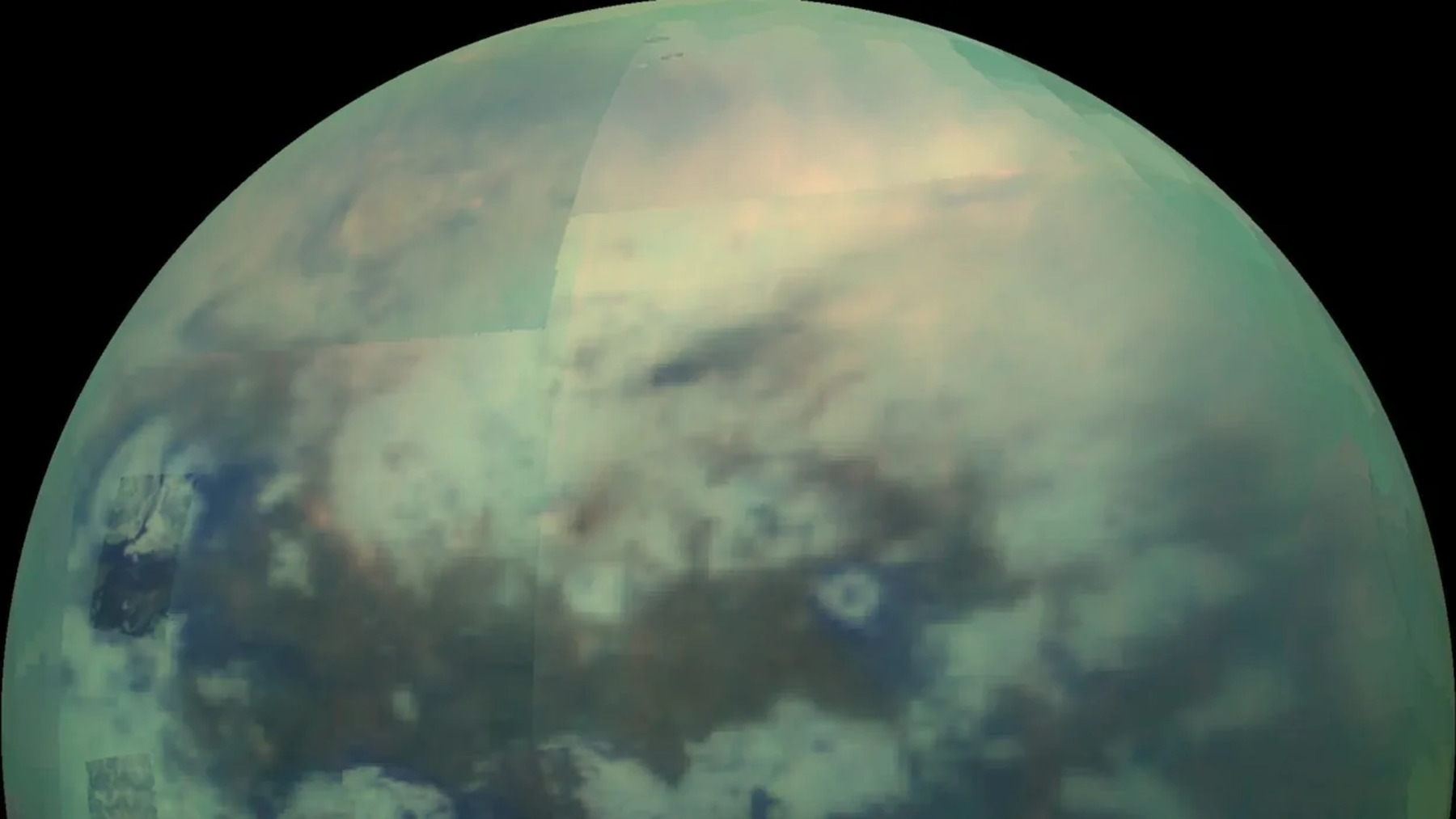Titan is Saturn’s biggest moon, and NASA has managed to send a mission, Dragonfly, to explore it. This has been a long time coming and many are extremely excited to see what we will discover. We will still have to wait a very long time, as the Dragonfly mission will not touch down on Titan until 2034, but the little that we know about the moon is quite encouraging.
Preliminary studies suggest that Titan may have a lot more in common with Earth than we think, and that it has huge lakes and seas that, instead of being filled with water, are filled with methane and ethane. This is exciting because these bodies of alcohol mimic our water cycle (it is a hydrocarbon cycle in this case) which causes liquids to evaporate, form clouds, then rain back down again, recycling across the landscape.
Since on Earth the water cycle is essential to keeping life going, scientists are thinking that the same could be said for Titan, and preliminary studies suggest that there are some primitive cell prototypes, each made of a fatty membrane wrapped around a gooey center that could be considered the precursor of life in the moon.
Could the Moon Titan be in the beginning stages of life?
The study that suggests this theory was published in the International Journal of Astrobiology and it is already garnering some interest from other scientists. After all, we have been hoping for life, albeit a bit more advanced, ever since we started trying to go to space.
Conor Nixon, a planetary scientist at NASA’s Goddard Space Flight Center explains why this discovery is so important for the community as a whole “The existence of any vesicles on Titan would demonstrate an increase in order and complexity, which are conditions necessary for the origin of life.”
He and fellow researcher James Mayer also support the idea that Titan’s constant rain-lake cycle is what is making these vesicles emerge. They believe that the process begins with a shower of methane dragging certain molecules down to the lakes and in these molecules, one end is drawn to liquids and another is drawn to fats.
“Regarding amphiphilic compounds, the recent Cassini mission revealed the presence of organic nitrile. Such compounds… are basically amphiphilic and have the capability to self-aggregate in non-polar environments,” Nixon and Mayer note in their paper.
When these molecules hit the lake surface, they may clump into a thin layer and then, as more raindrops splash down, they get coated in this layer and bounce back up, floating in the air as tiny droplets wrapped in membranes. If those droplets take a second plunge into the lake, they can get coated again, forming a double layer and that double membrane is a major feature of real biological cells.
“Stable vesicles will accumulate over time, and so will the corresponding stabilizing amphiphiles that are temporarily protected from decomposition,” Nixon and Mayer write. “In a long-term compositional selection process, the most stable vesicles will proliferate, while less stable ones form dead ends… This leads to an evolution process leading to increasing complexity and functionality.”
To really confirm this theory, scientists would need to search for amphiphiles floating around Titan’s skies, and that will not be possible, as Dragonfly will not have the right tools for that job, but considering that life takes millennia to develop, there is still plenty of time to analyze the theory, even if we are not alive by the time that it is proven.
Still, Dragonfly will analyze Titan’s surface chemistry and dig into whether the right kinds of reactions are happening or have happened there and will help us figure out investigative paths for the future.
